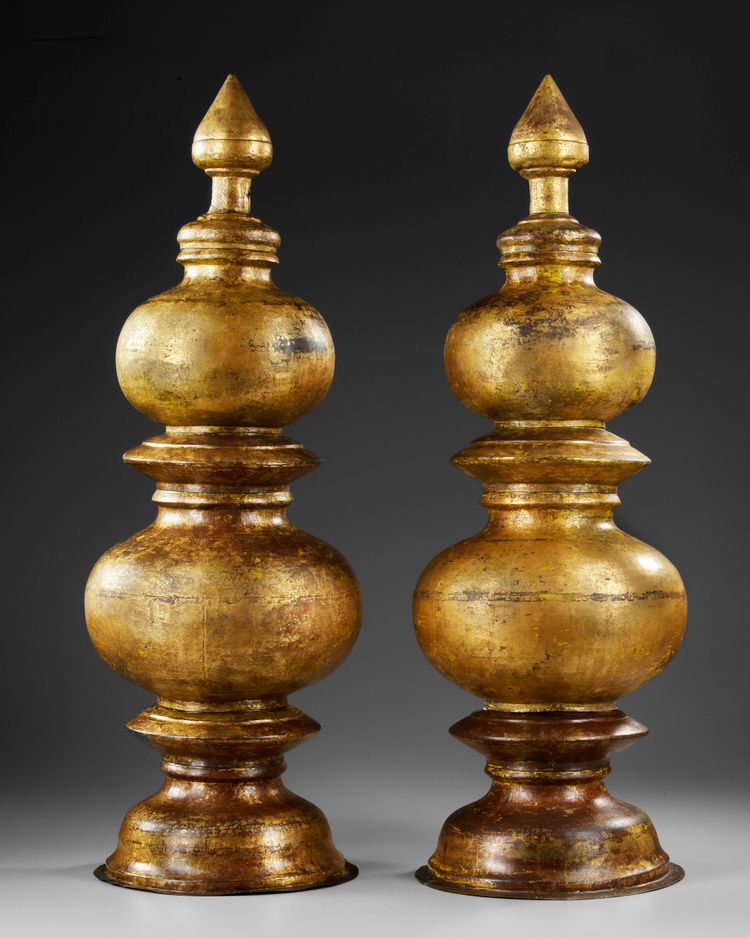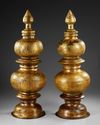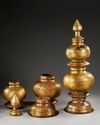A PAIR OF LARGE OTTOMAN TOMBAK ALAM FINIALS, TURKEY, 18TH CENTURY
Metalwork, copper and zinc.
Each composed of four parts, a bell shaped base, two parts with compressed globular body and a domed top part.
Height 82 cm.
PROVENANCE from a Dutch family.
CATALOGUE NOTE The decrease in the production of gold and silver works due to economic reasons in the 18th century led to the proliferation of gold-looking tombaks. Tombak is the general name of copper and copper alloy ware coated with a mixture of gold and mercury. In the Ottoman metal art, copper and copper alloy brass found widespread use in items used in daily life and religious buildings, military equipment, and architectural decoration elements. Examples of the early period of Ottoman metallurgical art are military equipment. While the Mamluk influence was seen in forms and decorations in the 15th century, the classical Ottoman style was shaped in the early 16th century. Another feature of gold and silver is that they can dissolve in mercury, that is, liquify. This liquid mixture of mercury and gold is called amalgam. It has been used until today because a very solid and smooth coating is obtained with the gilding or tombaking technique, which is carried out by making use of this feature. To make tombaking, mercury and very finely chopped 24-carat gold are mixed in a “glass or porcelain bowl”. By mixing this mixture with a “wooden stick”, the gold is completely dissolved in the mercury, that is, liquified. Then, the liquid alloy, namely amalgam, which is filtered through a fine cheesecloth, is ready for use. The surface of the item to be gold plated is cleaned from all oxides and dirt and dried. Tombak is applied to the surface to be made with a brush, a piece of cork or a cloth pad by absorbing amalgam. The mercury is volatilized by placing the packed goods on a “burning charcoal fire” or baking them at low temperatures. (The inhalation of mercury that evaporates at this stage is extremely dangerous and has caused vital problems for people who have done this profession in the past. Therefore, it is an art that requires mastery and delicacy.) Since the remaining gold has infiltrated and adhered to the surface, the coating is of very high quality.



